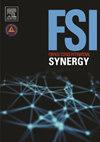Errors in toxicology testing and the need for full discovery
Q1 Social Sciences
引用次数: 0
Abstract
Despite toxicology's foundation in analytical chemistry and quantitative measurements, it remains vulnerable to errors that can impact criminal justice outcomes. This paper presents a review of notable errors in toxicology collected over a combined 48 years of field experience. We highlight cases of toxicology errors from across multiple jurisdictions, categorizing them by type: traceability errors, calibration errors, discovery violations, maintenance failures, source code defects, fraud, errors due to interfering substances, reporting errors, laboratory contamination, and chain of custody breaches.
Our analysis reveals that many errors persisted for years before detection, with some lasting over a decade. Discovery often came from external sources rather than internal quality controls. Errors ranged from technical failures to deliberate misconduct, affecting thousands of cases. Notable patterns include institutional resistance to disclosure, retaliation against whistleblowers, and systematic withholding of exculpatory evidence. The compilation demonstrates vulnerabilities in toxicology. Key reforms needed include transparency through online discovery portals, mandatory retention of digital data, independent laboratory accreditation, whistleblower protections, and regular third-party audits. By examining past errors, the forensic science community can develop policies to prevent similar mistakes and enhance both scientific integrity and the pursuit of justice.
毒理学测试中的错误和全面发现的必要性
尽管毒理学的基础是分析化学和定量测量,但它仍然容易受到可能影响刑事司法结果的错误的影响。本文提出了一个值得注意的错误,在毒理学收集超过48年的现场经验的审查。我们重点介绍了来自多个司法管辖区的毒理学错误案例,并按类型对其进行了分类:可追溯性错误、校准错误、发现违规、维护故障、源代码缺陷、欺诈、干扰物质导致的错误、报告错误、实验室污染和监管链违规。我们的分析显示,许多错误在被发现前持续了数年,有些甚至持续了10多年。发现往往来自外部来源,而不是内部质量控制。错误包括从技术故障到故意不当行为,影响了数千起案件。值得注意的模式包括对披露的制度性抵制,对举报人的报复,以及系统性地隐瞒无罪证据。该汇编显示了毒理学的脆弱性。需要进行的关键改革包括通过在线发现门户实现透明度、强制保留数字数据、独立实验室认证、举报人保护和定期第三方审计。通过审查过去的错误,法医科学界可以制定政策来防止类似的错误,并加强科学的完整性和对正义的追求。
本文章由计算机程序翻译,如有差异,请以英文原文为准。
求助全文
约1分钟内获得全文
求助全文
来源期刊

Forensic Science International: Synergy
Social Sciences-Law
CiteScore
4.90
自引率
0.00%
发文量
75
审稿时长
90 days
 求助内容:
求助内容: 应助结果提醒方式:
应助结果提醒方式:


